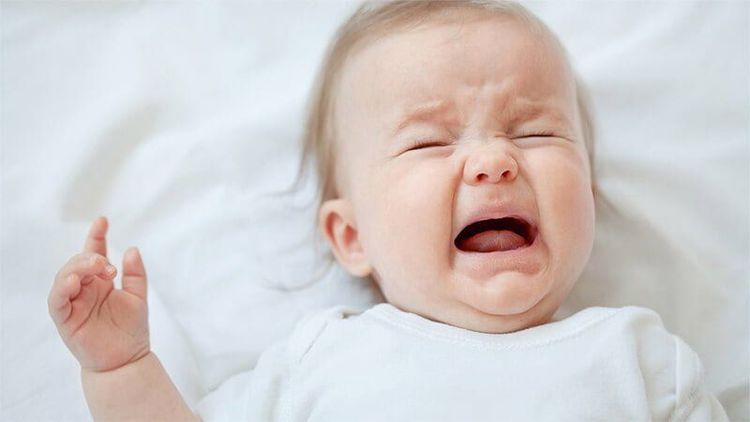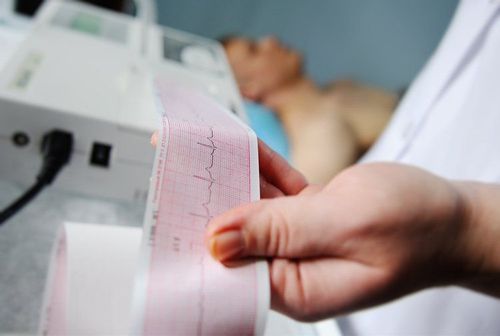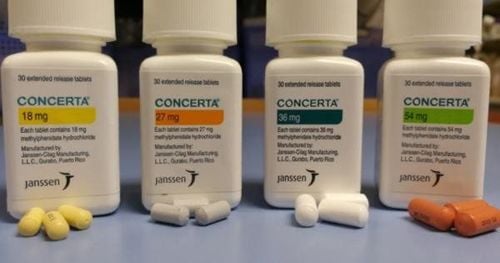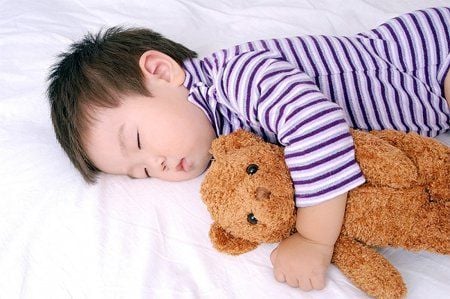This is an automatically translated article.
During sleep, the pituitary gland in the brains of children secretes growth hormone. Manifestations of sleep disorders in children are often diverse, so it is necessary to pay attention to observe from parents.1. Sleep disorders in infants
Sleep disturbance in infants and young children is a phrase that describes a period when a baby who has been sleeping well suddenly wakes up more during the night, taking shorter naps for no apparent reason. This stage usually lasts within a month, especially with young people lasting several months..Depending on age, children have different sleep needs each day.
Newborns: In the first weeks of birth, babies can sleep from 18h-20h/day, each sleep can last from 30 minutes to 3 hours. Infant sleep is often irregular, often sleeping more during the day than at night. If the baby sleeps nearly enough during the day, the chances of him staying up late are high.
However, for some reason, the child sleeps less than the above amount of sleep or the child is often awake all day and night. This means that children are facing sleep disorders in babies.

2. Manifestations of children with sleep disorders
Children < 6 months: Sleep on demand. This age has begun to form a sleep-wake cycle, night sleep lasts about 9.5 to 11.5 hours. Daytime sleep is about 3.5 to 5.5 hours shorter. Children from 6 months to 1 year old: Children sleep according to their needs and circadian rhythms, daytime sleep is reduced to only 1-2 naps during the day. Total sleep time between the ages of 6 months and 1 year is about 14 hours/day. Children from 18 months: Children have less need for daytime sleep. Children from 2.5 years old to 5 years old: Children rarely sleep during the day because this is the age when children like to explore the world around and receive many stimuli from the outside environment, most children can sleep on their own. night.
Trắc nghiệm: các chỉ số cần chú ý về sự phát triển thể chất của trẻ
Chiều cao, cân nặng của bé ở từng giai đoạn nên là bao nhiêu là bình thường, bao nhiêu là bất thường? Cùng ThS.BS Ma Văn Thấm điểm lại xem bạn đã nắm được các chỉ số phát triển thể chất của bé chưa nhé!The following content is prepared under supervision of Thạc sĩ, Bác sĩ y khoa, Ma Văn Thấm , Nhi , Phòng khám Đa khoa Quốc tế Vinmec Dương Đông(Phú Quốc)
When your child has the following signs, think about the manifestation of a child with a sleep disorder.
Drooping eyelids Yawn a lot, doze off. Play less, reduce flexibility Fatigue, lethargy Manifestations of the disease Symptoms of children with sleep disorders in many different ways such as: short breathing with snoring, muscle twitching when sleeping, sleeping during the day excessive, periodic limb movements, narcolepsy, insomnia, night terrors... among which narcolepsy and night terrors are quite common.
Narcolepsy Narcotics are manifestations of a child with a sleep disorder that appear to be on purpose when the child suddenly awakens from deep sleep. At that time, children can do simple movements such as sitting up in bed, some other children have complex automatic movements such as walking, dressing, eating. Narcolepsy usually occurs 1-2 hours after going to bed (ie in the 3rd and 4th stages of slow sleep), in the sleep, the child opens his eyes, but if he talks to the child, he almost does not. understand. The attack lasts for less than 30 minutes. After a long sleep, the child fell asleep again. The next morning, ask the child if he or she does not remember what happened during the night.
Sleepwalking is quite common: about 10 - 15% of children aged 5 - 12 years have migraines. More boys are affected than girls.
Night terrors

Symptoms of children with sleep disorders in panic attacks are: suddenly the child sits up or struggles, screaming and crying after sleeping for a few hours. The child shows fear, tension, restlessness, eyes wide open but still seems to be asleep, the mother is not able to calm the baby or can not wake the baby up. Panic attacks last 10 to 15 minutes. After the bout, the child usually falls asleep. The next morning, the child woke up with no memory of what happened last night.
Tests If the child has somnolence, insomnia, sleep apnea, suspected nocturnal seizures, the child needs to be done some tests such as: EEG, electromyogram, electrocardiogram, ophthalmoscope. map, record video.
Currently, Vinmec International General Hospital is one of the few hospitals with a full range of pediatric specialties, able to perform general examinations in conjunction with a nutritionist to help build their own menu. for babies, neurological examination, mental problems, reflexes. In particular, Vinmec has strengths in physical examination with the cooperation of the rehabilitation center for children with autism - cerebral palsy.
If you have a need for consultation and examination at Vinmec Hospitals under the nationwide health system, please book an appointment on the website for service.
Please dial HOTLINE for more information or register for an appointment HERE. Download MyVinmec app to make appointments faster and to manage your bookings easily.














